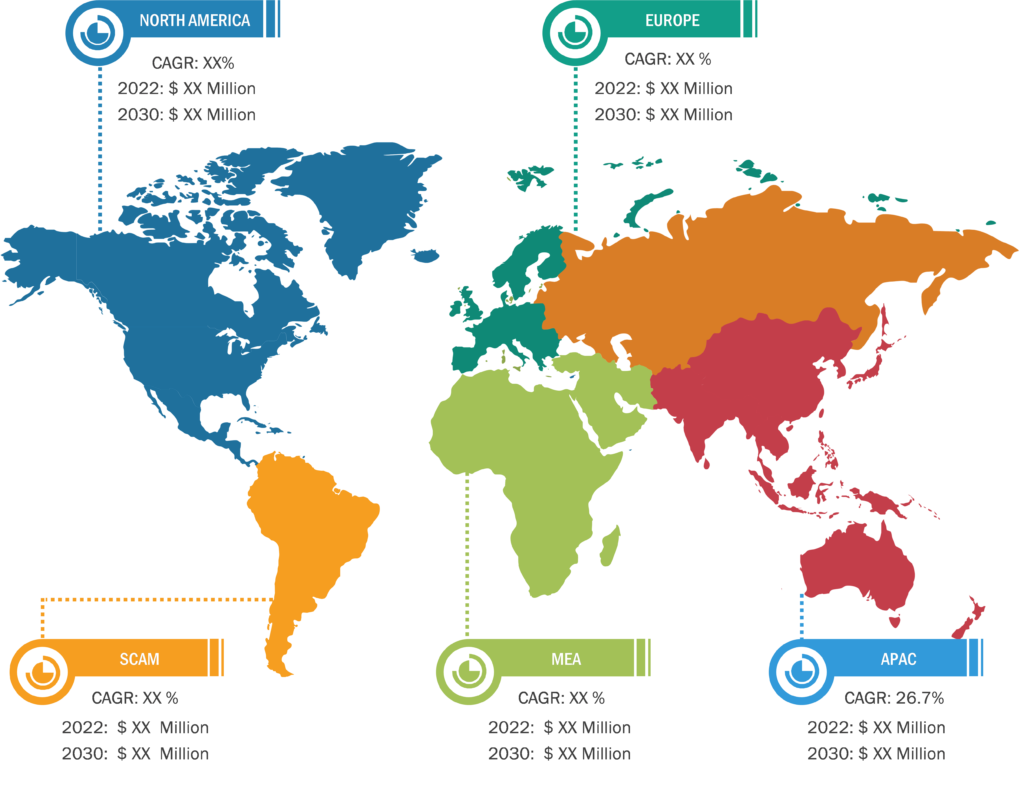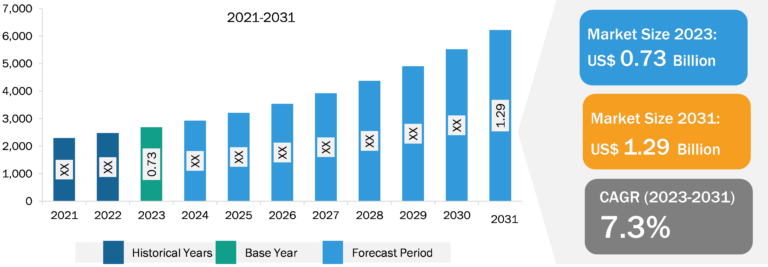
Malaria And Sickle Cell Disease Treatment Market
Asia Pacific is the fastest-growing region in the global malaria and sickle cell disease treatment market. North America accounted for the largest share of the global malaria and sickle cell disease treatment market in 2022. In the region, the US held the largest malaria and sickle cell disease treatment market share and is anticipated to register the highest CAGR during the forecast period.
According to the World Health Organization (WHO) 2021 report, China has been recognized as malaria-free. The country has managed to decrease the annual count of malaria cases by 99%, from 30 million to 30,000 cases. Such a drop in the number of cases can be attributed to a basic public health service package provided by China to its residents without charging fees. Through these packages, all people in China get access to affordable malaria diagnostics and treatment services, irrespective of their legal or financial status. Additionally, multi-sector collaboration in China has also been proven successful in achieving zero cases in China. For example, 14 ministries in China—health, education, finance, research and science, development, public security, army, police, commerce, industry, information technology, customs, media, and tourism—have joined forces to end malaria. Further, through the support from the Global Fund to Fight AIDS, Tuberculosis, and Malaria, China has upgraded training, laboratory equipment, staffing, and mosquito-control measures, which are required to find, treat, and prevent malaria cases in China.

Rising Initiatives to Raise Awareness about Malaria and SCD Drives Malaria And Sickle Cell Disease Treatment Market Growth
Malaria and sickle cell disease awareness campaigns help enhance the knowledge of the population regarding the disease, thereby promoting healthcare services through intersectoral collaboration and social support. The WHO coordinates with the Global Malaria Programme (GMP) as part of its global efforts for controlling and eradicating malaria. The WHO also observes World Malaria Day on April 25 of every year to highlight the commitment of the communities dedicated to spreading awareness about malaria and its treatment and uniting for the common objective of eliminating malaria cases.
Governments of several countries are taking various initiatives to create awareness and conduct research for the development of new antimalarial drugs and vaccines. As per the WHO data, total funding for the control and elimination of malaria reached ~US$ 3 billion in 2019; the governments of endemic countries such as South Africa and Asia collectively contributed 31% (~US$ 900 million) of the total fund to create awareness and development of new vaccines for the treatment of the disease. Various private companies are also investing heavily in R&D activities to reduce the incidence of malaria. According to the Global Health Policy, the US government allocated a funding of ~US$ 1 billion in FY 2022 for malaria control and research activities. The US government, under the PMI Strategy 2021–2026, aims to manage the spread of malaria and reduce deaths caused by it, along with a long-term aim of eradicating the disease.
Governments of various countries across the globe with a high prevalence of malaria and sickle cell disease are deploying various strategies to eradicate the diseases by improving access to healthcare services, including treatment options, to the people. A few of the initiatives undertaken are as follows:
• Myanmar has a national malaria control plan that the Global Fund has approved, and by 2030, it is expected to eliminate the disease caused by P. falciparum. The universal healthcare coverage in the country also includes access to malaria diagnosis by means of microscopy or rapid diagnostic tests (RDTs) and artemisinin-based combination therapies (ACTs).
• The government of Thailand has implemented a National Malaria Elimination Strategy (NMES) 2017–2026 that further applies an integrated elimination strategy that aims to eliminate the disease by 2024.
• In February 2023, the Government of India, through the National Health Mission, announced its plan to support states in their efforts to prevent and treat sickle cell disease. In the Union Budget 2023–2024, the government announced a mission to eliminate sickle cell anemia by 2047.
• In 2022, the African Health Ministry launched a campaign to raise awareness, strengthen prevention, and provide medical care to reduce the number of SCD patients in the region.
• In September 2021, Aflac initiated an awareness program with numerous educational initiatives and activities during National Sickle Cell Awareness Month. Additionally, the company announced a program for children suffering from SCD through the expansion of its My Special Aflac Duck game.
• In September 2021, the American Red Cross launched an initiative to increase the number of Black blood donors to help patients suffering from sickle cell disease, which is a persistent and invisible health disparity in the US.
• In June 2021, the Kidney Cancer Association (KCA) and the Sickle Cell Disease Association of America, Inc. (SCDAA) jointly launched a program called KNOW & TELL to raise awareness about treatment options for sickle cell disease and its likely connection to phasic renal carcinoma, a rare type of kidney cancer (RMC).
• In January 2020, the Corporate Alliance on Malaria in Africa (CAMA) launched a strategic plan for 2021–2023 with an aim to reach millions of people through malaria control interventions and thereby scale up prevention activities in Africa.
Thus, the abovementioned initiatives to spread awareness about malaria and sickle cell disease reinforce the eradication efforts to bolster the malaria and sickle cell disease treatment market growth.
Malaria And Sickle Cell Disease Treatment Market: Segmental Overview
By treatment, the malaria and sickle cell disease treatment market is divided into malaria and sickle cell disease. In 2022, the malaria segment held a larger market share, and the same segment is estimated to grow at the fastest CAGR during the forecast period.
By route of administration, the malaria and sickle cell disease treatment market is divided into oral and parenteral. In 2022, the oral segment held a larger market share, and parenteral segmented is estimated to grow at the fastest CAGR during the forecast period.
Based on distribution channel, the malaria and sickle cell disease treatment market is segmented into direct tender, hospital pharmacies, retail pharmacies, online pharmacies, and others.
Malaria and Sickle Cell Disease Treatment Market: Competitive Landscape and Key Developments
Cipla Ltd, Pfizer Inc, Sun Pharmaceutical Industries Ltd, Sanofi SA, GSK Plc, Novartis AG, Pfizer Inc, Emmaus Life Sciences Inc, AdvaCare Pharma USA LLC, VLP Therapeutics LLC, and Lupin Ltd are a few key companies operating in the malaria and sickle cell disease treatment market. These companies adopt product innovation strategies to meet evolving customer demands, which allows them to maintain their brand name in the malaria and sickle cell disease treatment market.
A few of the recent developments in the global malaria and sickle cell disease treatment market are mentioned below:
- In November 2022, Novartis, and Medicines for Malaria Venture (MMV) announced the plan to move to a Phase 3 study for a novel non-artemisinin combination to treat uncomplicated malaria. This novel combination also contains an optimized formulation of lumefantrine, which allows it to be given once daily versus the usual twice-daily administration.
- In October 2022, Pfizer Inc acquired Global Blood Therapeutics Inc. GBT brings a portfolio and pipeline that has the potential to address the full spectrum of critical needs for this underserved community. GBT discovered and developed Oxbryta (voxelotor), a first-in-class medicine that directly targets the root cause of SCD.






